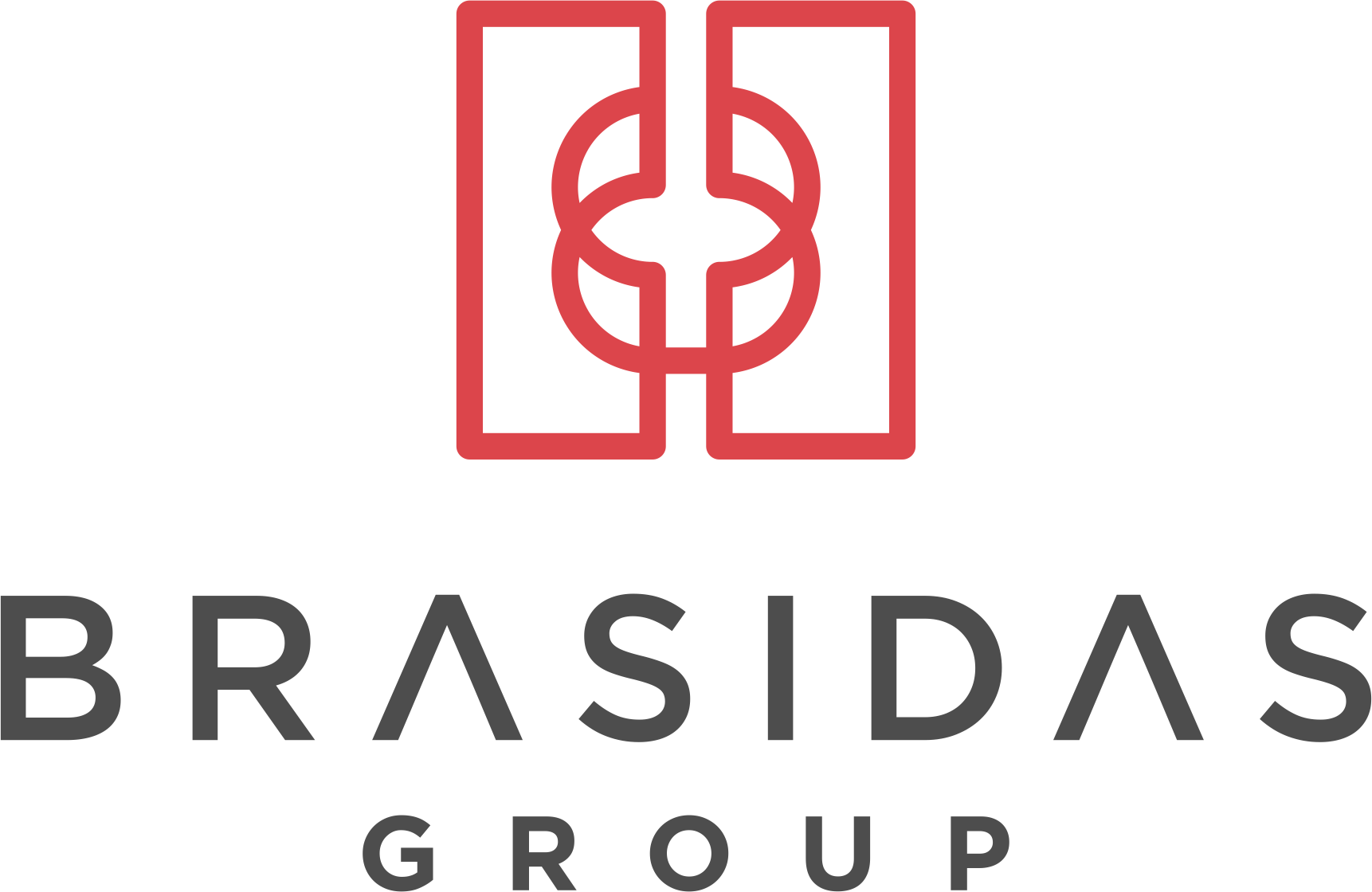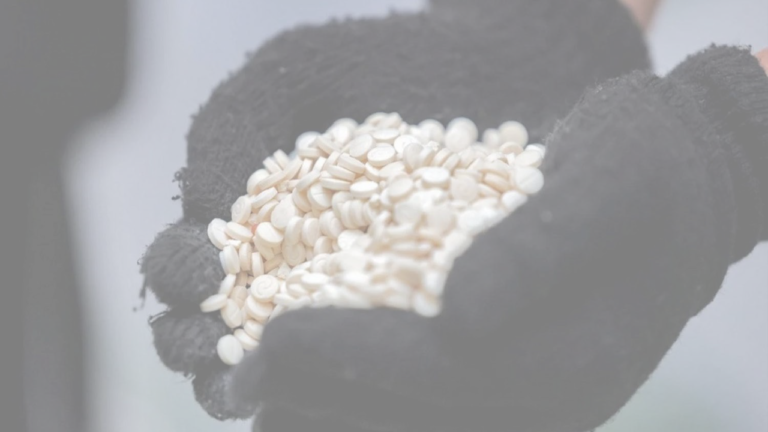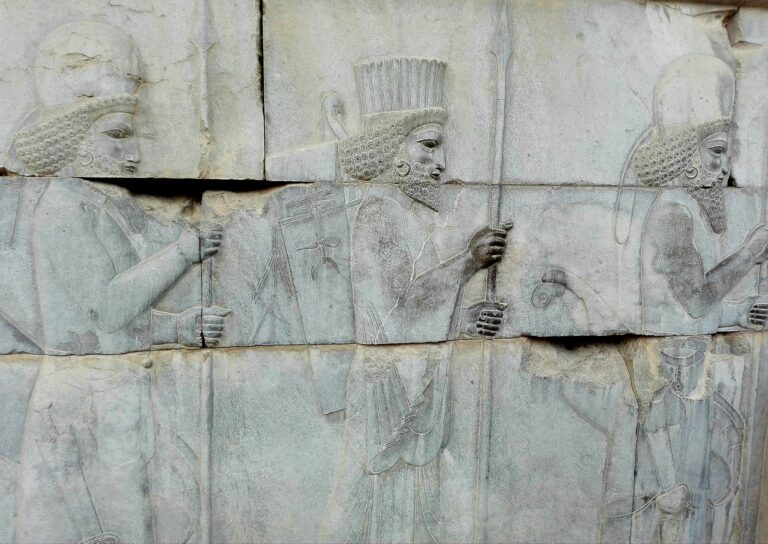A surprise attack on Israel from multiple fronts featured asymmetric and combined arms warfare tactics, shedding light on Palestine’s military advancements and prompting questions about weapon origin and funding sources.
On October 07, 2023, the Palestinian militant group Hamas launched a series of coordinated attacks against Israel named Operation Al-Aqsa Flood. Overnight, there was a significant and unprecedented incursion into Israeli territory as Hamas fighters crossed southern Israel from Gaza. This invasion resulted in casualties among Israeli soldiers and civilians, with thousands of rockets fired into Israel and a death toll exceeding 1,000, making it one of the deadliest days in Israel’s history. Israel responded with retaliatory airstrikes in Gaza, resulting in over 200 Palestinian casualties. This escalation has led to an outright war between Israel and Hamas, which is unparalleled in recent Israeli-Palestinian conflict history.
Fundraising and Logistics
For decades, Palestinian war efforts have been sponsored by the military backers, diaspora, and numerous allies from Arab countries. Despite a withdrawal in 2005, Israel maintains strict control over the region’s maritime, air, and land borders. However, Palestinian resistance has managed to smuggle weapons into the Gaza Strip despite the Israeli siege and encirclement. Simultaneously, Egypt and Israel closely monitor the movement of people through two border crossings in the area from the southern side.
Given these circumstances, Palestinians appear to have adapted to their unique financial constraints to sustain their resistance efforts. Resistance groups have employed alternative methods to finance their military actions against Israel. These methods include homegrown production of weapons and drones, smuggling arms through tunnels and sea-based deliveries, support from state sponsors like Iran, soliciting charitable donations, taxation, investment activities, and cryptocurrency fundraising campaigns.
Palestinian resistance is financed through various means, such as charitable donations, taxes, cryptocurrency, and investment activities. While Hamas organizes fundraising activities in Gulf countries, Western Europe, and North America, the funds are never provided directly to the military groups but its affiliated social welfare organizations. However, some of these charitable organizations face allegations of supporting terrorist groups. For example, the Relief Fund for the Afflicted and Needy in Ottawa was discovered to have funneled approximately USD 14.6 million worth of resources to various Hamas-affiliated groups between 2005 and 2009, leading to it being labeled as a terrorist organization.
Hamas also collects various taxes, including Zakat, an Islamic charitable donation, and up to USD 15 million from taxes on goods imported from Egypt, primarily cigarettes, fuel, and construction materials. According to Al-Monitor, Hamas has also imposed a 16.9 percent tax on the products entering Gaza from the West Bank in May 2022, thus enhancing its resources at the expense of the already impoverished population.
Finally, Hamas’ armed wing, the Izz al-Din al-Qassam Brigades, has diversified its collection methods for fundraising through Bitcoin, presenting challenges for regulators trying to trace cryptocurrency financing. Through a fundraising campaign, the group has encouraged its supporters to donate using Bitcoin. Initially, they requested donations to a single digital wallet, but they have altered their approach, generating a new one with each transaction, making monitoring more challenging.
Reportedly, military leaders have received salaries from Iran, and the withdrawal of the funds makes it hard for them to even “pay the monthly bills.”
Investments and Sanctioned Entities
In August 2021, the German newspaper Die Welt wrote about Hamas’ secret investment fund with over USD 500 million assets through investments in companies in Turkey, Saudi Arabia, Algeria, and Sudan, primarily in the real estate and construction sectors. In May 2022, the U.S. Department of Treasury imposed sanctions on an “expansive network of three Hamas financial facilitators and six companies that have generated revenue for the terrorist group through the management of an international investment portfolio.”
Three individuals were identified as senior officials of the Hamas Investment Office:
- Ahmed Sharif Abdallah Odeh, a Jordanian national in charge of the international investment portfolio until 2017;
- Hisham Younis Yahia Qafisheh (Qafisheh), a Turkey-based Jordanian national who served as deputy from 2017 onwards, was essential in transferring funds on behalf of various companies linked to Hamas’s investment portfolio. He was a member of the Board of Directors at Sudan-based Agrogate Holding, the Deputy Chairman of the Board at Turkey-based Trend GYO, and the Chairman of the Board at Sudan-based Al Rowad Real Estate Development. Moreover, Qafisheh also managed Anda Company, a real estate and construction business based in Saudi Arabia.
- Abdallah Yusuf Faisal Sabri, a Kuwait-based Jordanian national and a Hamas financial official and representative, has been an essential figure in the terrorist organization since 2006, significantly expanding Hamas’s reach in the region.
Hamas Investment Office also covertly held assets in Algeria-based Sidar Company and UAE-based Itqan Real Estate JSC, which appeared to operate as legitimate businesses. However, in practice, Hamas reportedly controlled these entities and transferred money to the group. Many funds these companies transferred to Hamas were allocated to the group’s military arm, the Izz-Al-Din Al-Qassam Brigades.
Although the U.S. Treasury Department swiftly imposed sanctions on these individuals and companies, the international media and U.S. officials assume that the group may continue to fund its military activities through similar investment arrangements.
Direct Sponsors and Foreign Allies
The resources provided through the earlier mentioned fundraising activities are primarily used to develop military capacities and supply armed groups, such as Hamas, with weapons and additional technology and equipment. Since Israel’s withdrawal from Gaza, Palestinian militant groups and arms smugglers have smuggled weapons using specially constructed tunnels called the Gaza Metro, a complex system stretching across Gaza, used for transporting goods and people, storing ammunition, and as a hideaway for militant groups. While the exact size and range of Gaza tunnels remain a mystery, Israeli Defense Forces (IDF) representatives revealed in December 2017 that Palestinian militants built several hundred kilometers-long tunnels. In contrast, Hamas leaders in 2021 claimed they were 500 kilometers long.
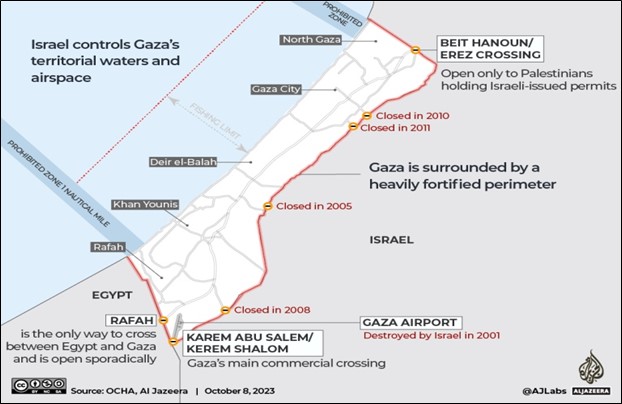
Source: OCHA, Al Jazeera
According to Al Mayadeen, Iran has been a key ally of Palestine resistance and has supplied Hamas with Fajr-3 rockets with a range of 43 km and Fajr-5 rockets with an extended range of 75 km, and which can carry a 90 kg high explosive (HE) warhead. More importantly, Iran played a crucial role in sharing knowledge related to rocket construction design, launching processes, and geometry with Hamas fighters in the past decade. Due to training provided by the Iran Revolutionary Guard Corps (IRGC), Palestinian fighters successfully launched over 5,000 rockets, some of which overwhelmed Israel’s Iron Dome system. In May 2021, Israel’s Channel 12 announced that Iran agreed to provide Hamas with USD 30 million monthly financial support in exchange for information on Israel’s missile capabilities and location. Al Mayadeen reports that Hezbollah equipped Hamas with Iranian missiles in 2021, including the M-302, a long-range unguided rocket known as Khaibar-1.
Iran was also mentioned as one of the major sponsors of Palestinian resistance movements in the U.S. Department of State’s Iran Action Group report from 2020. According to the report, Iran historically provided up to USD 100 million combined support for Hamas and the Palestinian Islamic Jihad (PIJ). Moreover, in a March 2022 interview, Hamas leader Ismail Haniyeh (Haniyeh) revealed that Iran provided the organization with USD 70 million to aid with missiles and defense system development. According to Haniyeh, it was due to Iran’s help that Hamas had a comprehensive defense strategy in its confrontation with the Israeli military in the Gaza Strip during the May 2021 operation “Sword of Jerusalem,” also named “Operation Guardian of the Walls” by IDF.
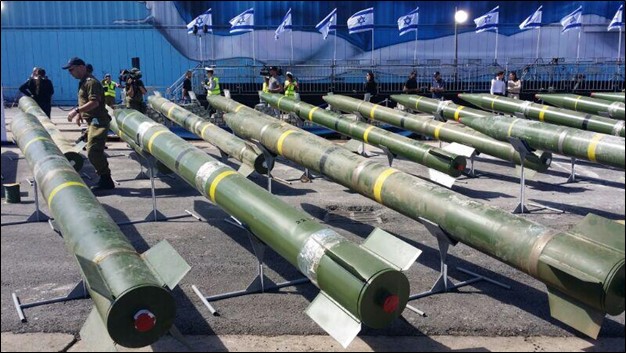
Source: https://armamentresearch.com/assessment-of-the-khaibar-1-rockets-captured-by-the-idf/
While Iranian officials deny their involvement in the Operation Al-Aqsa Flood, U.S. and Israeli intelligence services are assured that Iran provided Hamas with military training and logistic support. As no direct evidence supporting these claims has been made public as of the writing of this article, it should also be considered that Iran might have armed Palestinians through its other proxy organizations, such as Lebanese Hezbollah. However, some sources believe that the idea of Iran as a puppeteer should be cautious. According to the Jewish Chronicle, Iran withdrew financial support to Hamas, PIJ, and Popular Front for the Liberation of Palestine (PFLP) in September 2022, so the Palestinian resistance has been struggling ever since. Reportedly, military leaders have received salaries from Iran, and the withdrawal of the funds makes it hard for them to even “pay the monthly bills.”
Moreover, BNN Network pointed out other regional players, such as Turkey and Qatar, that may benefit from the conflict escalation. According to BNN’s article, both countries have pledged to increase aid to Palestine after October 07. However, these countries do not appear to fund Palestinian militant groups directly but through social and economic support funds; therefore, it is difficult to trace where the money ends.
According to the Co-operation of Worldwide Broadcast (CooPWB), Hamas also receives its weaponry through sea-based deliveries involving sealed capsules of arms being dropped off Gaza’s coastline, referred to as “ship-to-shore transfer.” Despite the challenges posed by the Israeli naval presence, this method allows Hamas to circumvent official border controls, ensuring a continuous supply of significant weapon stockpiles. Lastly, other reports suggest that Hamas also uses U.S. weapons supplied by the Taliban from Afghanistan.
Palestinian Homegrown Weapons
On October 4, Al-Quds Brigades, the military wing of the Palestinian Islamic Jihad (PIJ) movement, organized a commemorative parade marking the 36th anniversary of the resistance against Israel. During the parade, PIJ unveiled several homegrown rockets, launching systems and drones. However, the origins and characteristics of the new weaponry are shrouded in secrecy. During the parade’s proceedings, al-Quds Brigades presented a new rocket named “Jaafar” but kept all the details about the weapon’s range and warhead undisclosed. According to Al Mayadeen’s news report, the rocket’s frame, where such information would usually be painted with numbers indicating the rocket’s range, contained only three question marks. This is considered a conventional tactic of Palestinian resistance groups and a way to keep Israel unaware of its military capacities.
The military parade also featured several trucks carrying unmanned aerial vehicles (UAVs). One of the displayed drones was the Sayyad drone, an attack drone capable of being deployed on kamikaze missions, delivering substantial damage to enemy positions, and resembling the Yemeni Khattaf drone. Additionally, the parade introduced the Hudhud drone, named after the Eurasian hoopoe bird, which resembles reconnaissance drones in the possession of Hezbollah and the Yemeni Armed Forces. Finally, the Sahab drone is a versatile platform suitable for reconnaissance and offensive operations against enemy positions.
On October 08, Hamas released footage of 35 al-Zouari suicide attack drones targeting Israeli positions. The next day, Hamas also released a cinematic displaying a row of Rajoum Multiple Rocket Launchers (MLR), accommodating 114 mm artillery rockets, utilized for the initial wave of attacks on Israeli settlements and military installations. According to Al Mayadeen, each launcher has 15 slots for 114 mm artillery rockets designed for targeting nearby enemy positions and is based on the re-adapted World War II technology. At the same time, Hamas also published another video showing they are using re-adapted Katsycha artillery rockets from the Soviet era fired from improvised underground shelters.
Even though such military technology may be regarded as outdated compared to the cutting-edge weaponry and systems of the Israeli Defense Forces (IDF), rifling a launcher and UAVs in Gaza could present significant challenges. The reliance on such technologies is primarily due to the sanctions imposed on the Gaza Strip, which have led to temporary shortages of essential commodities. Given these circumstances, transporting heavy equipment necessary for standardized military production becomes a logistical challenge.
Due to Israel’s encirclement and siege, Palestinian resistance members have generally operated under challenging conditions to manufacture rockets, improvised explosives, and drones. A strict blockade restricts the flow of goods that could have civilian and military applications, leading Gazans to look for alternative methods to arm themselves.
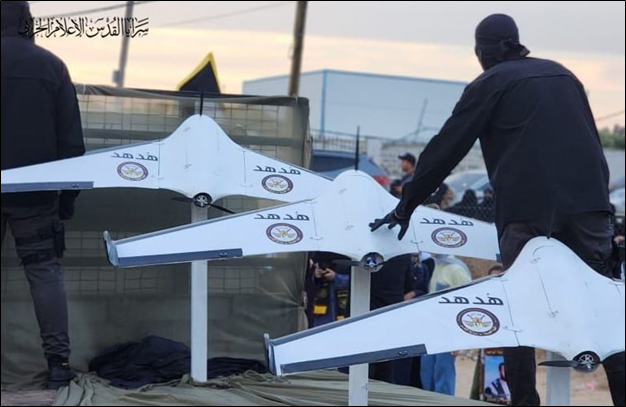
Palestinians facing a challenging economic landscape have been resourceful in finding ways to finance their military actions against Israel. As the conflict intensifies throughout October 2023, several countries have expressed public support for Palestine, including Iran, Turkey, Egypt, Sudan, and even Canada. For instance, Egypt aims to provide direct humanitarian aid to Palestinian civilians in Gaza, while Canada has announced financial support of USD 10 million for charity.
While none of these countries would directly support military organizations like Hamas, monitoring and controlling whether the funds provided officially to the Palestinian Authority for humanitarian aid and economic development would be allocated for war efforts is challenging. While the intent may be to support non-military activities, there is a risk that some portion of these funds could be redistributed among Palestinian militant groups like Hamas, PIJ, and PFLP. The lack of complete transparency and oversight in these complex situations can make it challenging to ensure that financial aid is exclusively used for peaceful and developmental purposes.
